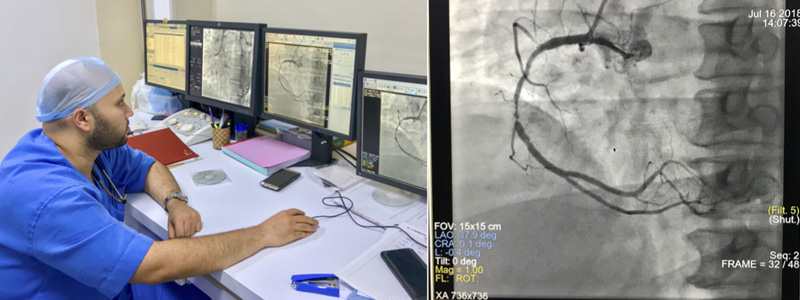-
-
+91 98208 22666 / 70092 40092
-
Services

What is Coronary Angiography?
Coronary Angiography is considered the gold standard for diagnosing Coronary Artery Disease (CAD). It provides a clear, detailed view of the coronary arteries to detect blockages that could lead to chest pain or heart attacks.
This procedure is performed in a sterile, hospital-based catheterization lab under controlled conditions. Though it is invasive, it is generally very safe.
How Is It Done?
-
A thin, flexible tube called a catheter is inserted through the wrist or groin.
-
The catheter is gently guided to the heart’s arteries.
-
A contrast dye is injected, and X-ray images are taken to visualize blood flow.
-
You’ll be awake but sedated with medication to help you stay relaxed and comfortable.
This is a day-care procedure—you can typically return home the same day, following observation.
Why Is It Important?
Coronary angiography enables your cardiologist to:
-
Identify narrowed or blocked arteries
-
Evaluate risk of heart attack
-
Plan the most appropriate treatment to relieve symptoms and prevent complications
What If a Blockage Is Found?
Coronary Angioplasty (PCI – Percutaneous Coronary Intervention)
If a significant blockage is detected:
-
A small balloon is inserted and inflated at the site of narrowing to widen the artery.
-
In most cases, a stent (a tiny mesh tube) is placed to keep the artery open and reduce the risk of re-narrowing.
This can often be done immediately during the same procedure as the angiography, if necessary.
Trust our expert team for comprehensive cardiac care.
We combine advanced technology with experienced hands to ensure safety, accuracy, and personalized treatment for every patient.

